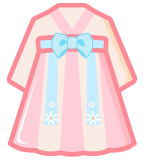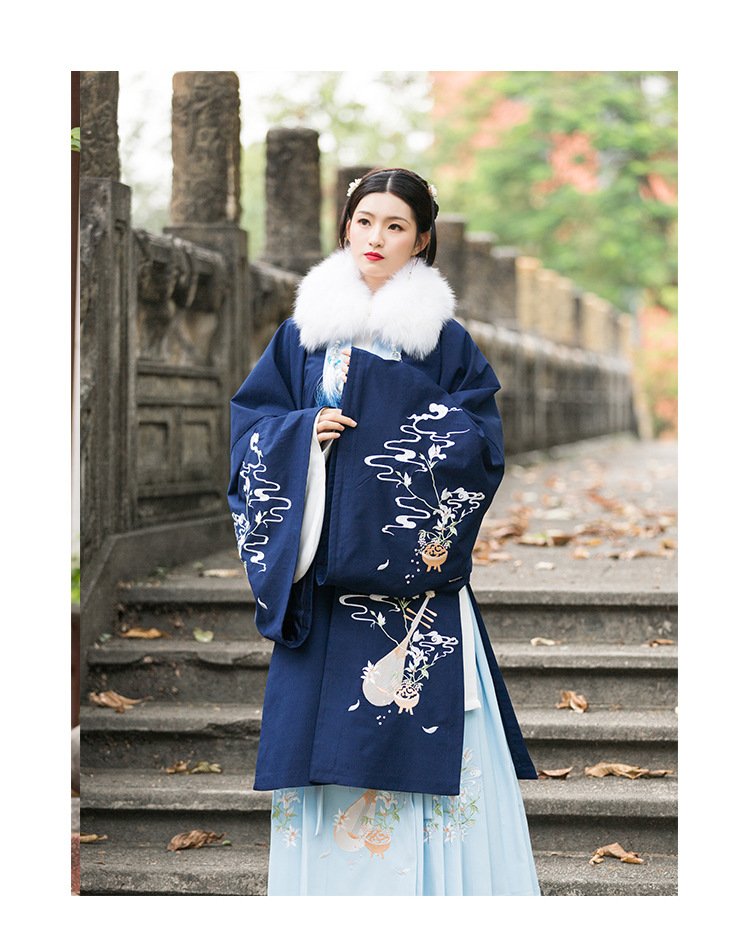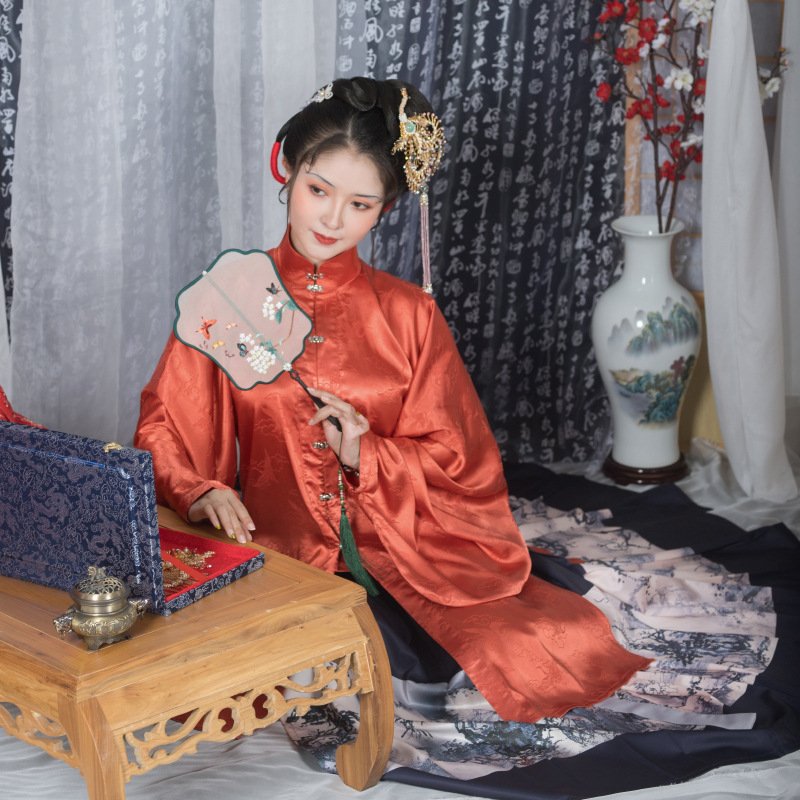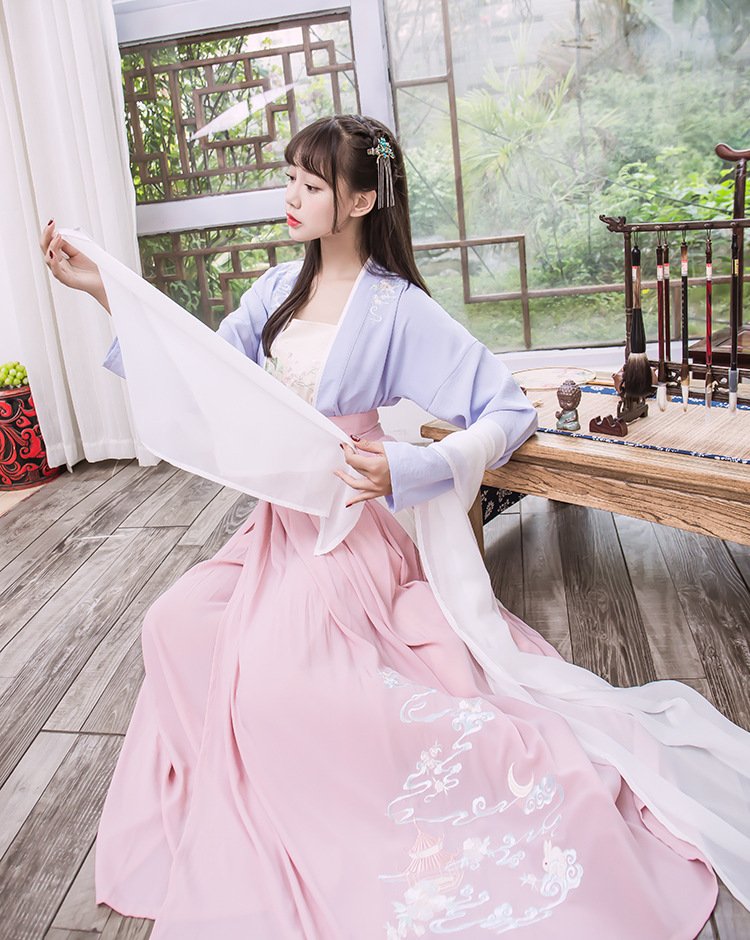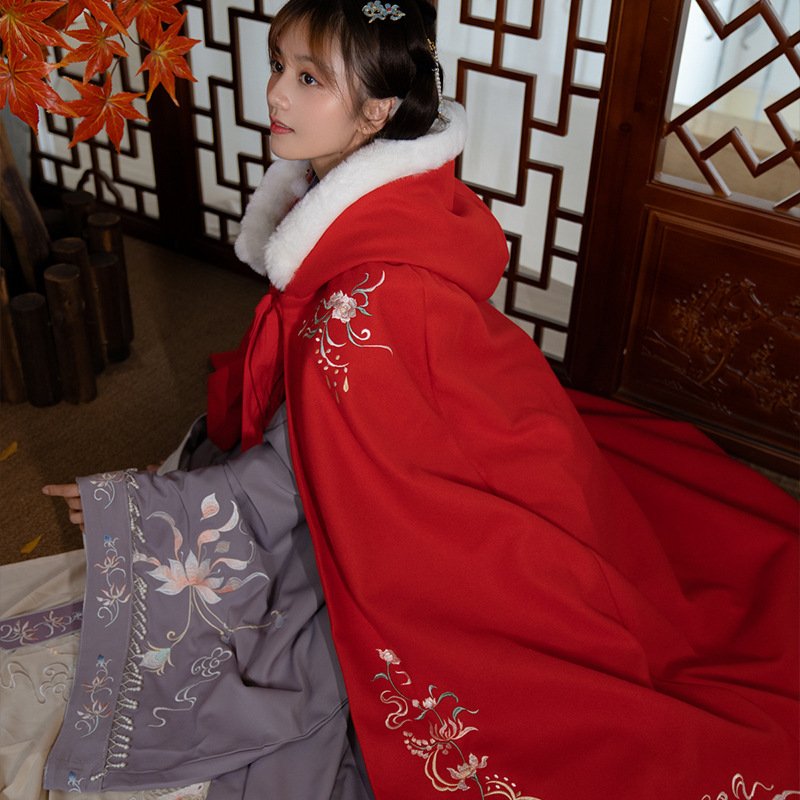What is the difference between Hanfu and cheongsam?
Hanfu and cheongsam are two iconic forms of traditional Chinese attire, each carrying a rich tapestry of historical and cultural significance. Hanfu, characterized by its loose-fitting robes with wide sleeves and distinct headpieces, traces its roots back to the Han Dynasty (206 BCE – 220 CE). This attire reflects the elegance and grace of ancient Chinese aesthetics, embodying a connection to traditional values and customs. On the other hand, the cheongsam, also known as qipao, has a more modern origin, emerging in the 1920s and gaining popularity in the 20th century. The cheongsam is a form-fitting dress with a high collar and side slits, often adorned with intricate embroidery. It is a symbol of Chinese women’s evolving fashion sensibilities, representing a fusion of traditional and contemporary styles. Both Hanfu and cheongsam carry profound cultural symbolism, serving as expressions of Chinese identity and heritage. Hanfu is often worn during traditional ceremonies, while the cheongsam is a popular choice for formal events and celebrations. Understanding the distinctions between these two traditional attires allows for a deeper appreciation of the diverse cultural threads interwoven in the fabric of Chinese history. The origins of Hanfu can be traced back thousands of years to ancient China, specifically to the Han Dynasty. This traditional attire holds a deep historical significance as it represents the clothing worn by the Han ethnic group, one of the major ethnic groups in China. Over the centuries, Hanfu has evolved, with each dynasty contributing distinct styles and elements to its design. Various dynasties have left their imprint on Hanfu styles. For instance, during the Tang Dynasty, Hanfu was characterized by its loose and flowing robes, while the Ming Dynasty saw a resurgence of more structured and layered garments. The diversity in Hanfu styles across different dynasties reflects the dynamic nature of Chinese fashion throughout history. Hanfu serves a vital role in preserving Chinese cultural heritage. By donning this traditional attire, individuals not only pay homage to the historical roots of the Han ethnic group but also contribute to the continuity of ancient customs and values. The significance of Hanfu extends beyond mere clothing, acting as a tangible link to China’s past and a visual representation of its rich cultural tapestry. In contrast, the cheongsam has a more recent history, emerging in the early 20th century during a period of Western influence in China. The cheongsam is a unique fusion of Chinese and Western clothing styles, reflecting the changing fashion landscape during that time. Its form-fitting silhouette, high collar, and intricate embroidery showcase a harmonious blend of traditional Chinese elements with contemporary Western aesthetics. The historical trajectory of Hanfu, deeply rooted in ancient Chinese civilizations, stands in stark contrast to the more modern and Western-influenced development of the cheongsam. Understanding the distinct origins and historical contexts of these two traditional attires sheds light on the multifaceted evolution of Chinese fashion over the centuries. Hanfu boasts a distinctive design characterized by loose-fitting, flowing garments that exude a timeless elegance. The use of multiple layers, wide sleeves, and long hems in Hanfu is intentional, contributing to an overall sense of sophistication and grace. These design elements not only provide a visual feast but also convey a sense of historical opulence associated with traditional Chinese aesthetics. The versatility of Hanfu is reflected in its various types tailored for different occasions. Formal wear might include more elaborate and structured designs, while daily wear emphasizes comfort without compromising on style. Festival wear often incorporates vibrant colors and intricate patterns, enhancing the celebratory atmosphere. In contrast, the cheongsam is a one-piece dress known for its form-fitting silhouette. This design accentuates the curves of the female body, emphasizing a modern and sleek appearance. Often crafted from luxurious materials like silk or brocade, the cheongsam radiates a sense of refinement and femininity. While the cheongsam design has evolved over time, adapting to changing fashion trends, it maintains its distinctive high collar and side slits. These signature features contribute to the timeless allure of the cheongsam, ensuring its recognition and popularity endure across generations. The juxtaposition of Hanfu’s loose and layered design with the form-fitting elegance of the cheongsam showcases the diversity within traditional Chinese attire, reflecting the evolving tastes and preferences embedded in the cultural fabric of China. Hanfu holds profound cultural significance as it stands as a symbol of Chinese identity and traditional values. Beyond being a mere garment, Hanfu is a manifestation of cultural heritage, connecting individuals to the rich tapestry of Chinese history. In modern times, there has been a notable resurgence in efforts to revive and popularize Hanfu, with enthusiasts embracing it as a means to express pride in Chinese culture and strengthen their connection to the country’s historical roots. Wearing Hanfu is viewed as a cultural statement, allowing individuals to bridge the gap between the past and present. It serves as a tangible link to Chinese history, fostering a sense of continuity and contributing to the preservation of traditional customs. The donning of Hanfu is not merely a fashion choice; it is a deliberate act to celebrate and honor the essence of being Chinese. On the other hand, the cheongsam holds cultural significance as a representation of modern Chinese fashion and elegance. Its association with Chinese cinema has propelled it into the international spotlight, making it a popular choice for various high-profile events. The cheongsam’s sleek and sophisticated design has become synonymous with grace and style, contributing to its status as an iconic symbol of Chinese fashion. The cheongsam’s popularity in international events further emphasizes its role in shaping perceptions of Chinese aesthetics on a global scale. As a cultural ambassador, the cheongsam transcends its fashion origins to become a powerful emblem of China’s elegance and modernity. In the intersection between tradition and contemporary allure, both Hanfu and cheongsam play pivotal roles in conveying the multifaceted cultural identity of China. In conclusion, the distinctions between Hanfu and cheongsam are woven into the fabric of China’s diverse cultural history. Hanfu, with its loose-fitting, layered design,
What is the difference between Hanfu and cheongsam? Read More »
